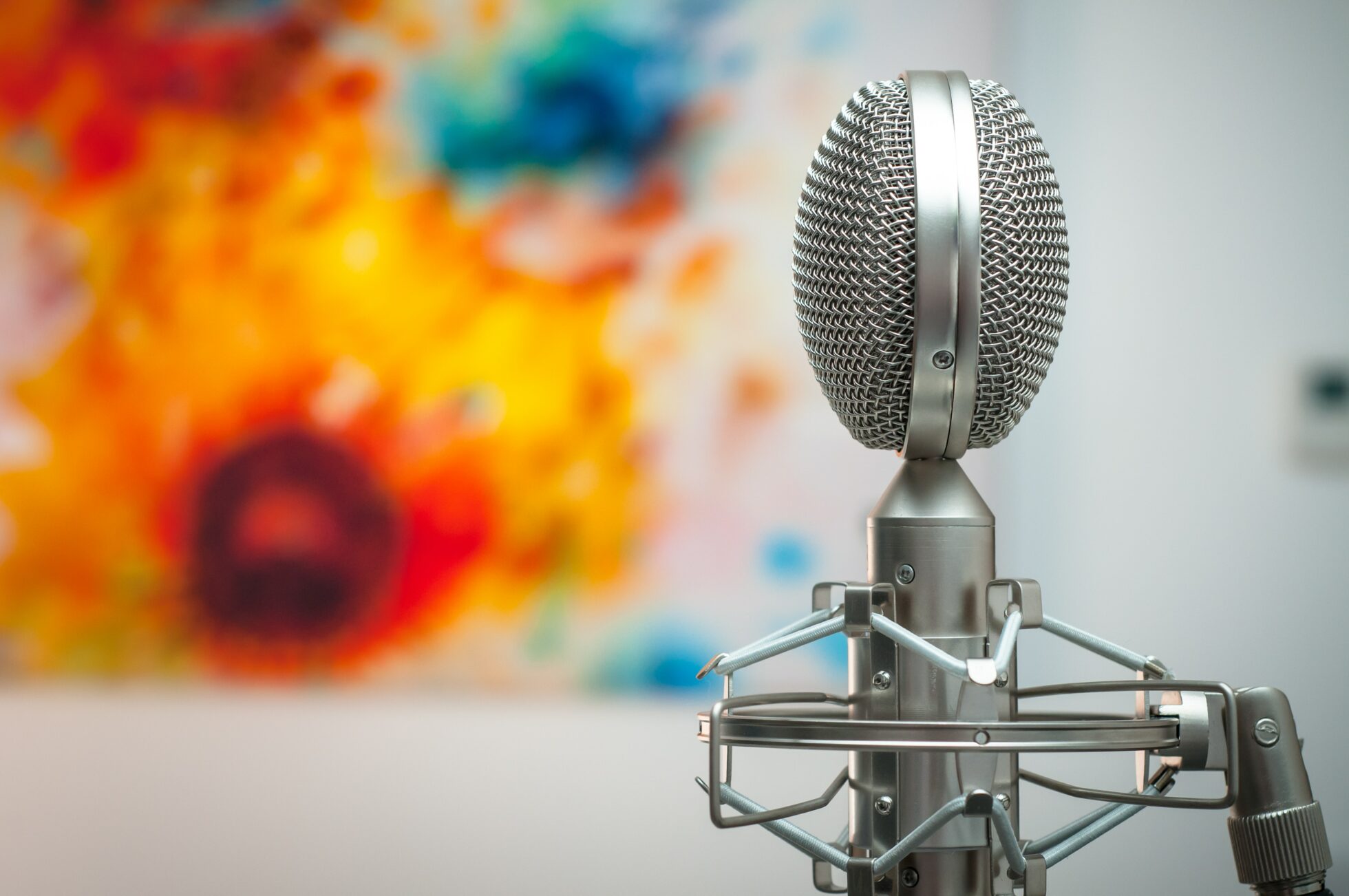Die Bedeutung der Gesprächsdynamik: Tonfall und Tonhöhe in der Kommunikation und erfolgreiche Verkaufstechniken können über Ihre Konversionsraten entscheiden. Dies sind keine Begriffe, die für das Opernhaus oder einen trendigen Podcast reserviert sind, sondern sie sind in der Welt des Verkaufs von zentraler Bedeutung. Stellen Sie sich vor, Sie würden in einem Verkaufsgespräch wie ein Roboter oder ein Shakespeare-Schauspieler reden, wenn Sie versuchen, Softwarelösungen zu verkaufen. In jedem Fall werden Sie Ihren potenziellen Kunden verwirrter zurücklassen als eine Katze auf einer Hundeschau.

Warum also ist der Tonfall im Verkauf wichtig? Nun, es geht vor allem darum, sein Publikum zu verstehen, sich der Situation anzupassen und nicht so zu klingen, als hätte man gerade einen Thesaurus verschluckt. Wenn Sie so sprechen, dass Ihr Kunde sich angesprochen fühlt, kann das den Unterschied zwischen einem Geschäftsabschluss und dem Verlassen der Wohnung ausmachen.
Das gilt nicht nur für Stimmprofis oder diejenigen, die mit den Stimmbändern eines Engels gesegnet sind. Nein, es geht darum, menschlich und ansprechend zu klingen und, was am wichtigsten ist, die Zuhörer nicht einzuschläfern.
Was ist ein Ton?
Der Tonfall im Verkauf bezieht sich auf die Art und Weise, wie Sie sich verbal ausdrücken, und ist eine Art "unsichtbarer Händedruck". Es kommt nicht darauf an, WAS Sie sagen, sondern WIE Sie es sagen. Sie wollen professionell klingen? Verwenden Sie einen formellen Ton. Wollen Sie freundlich sein? Machen Sie es lockerer! Der Tonfall hilft Ihnen, mit Ihrem Publikum in Kontakt zu treten und Einfühlungsvermögen, Vertrauen oder Begeisterung zu vermitteln. Der richtige Tonfall kann den Unterschied zwischen einem "Let's talk" und einem "Let's walk" ausmachen. Die Stimme ist die Garderobe der Stimme, gekleidet, um zu beeindrucken, ohne dass man eine Krawatte braucht!
Ein starker, selbstbewusster Ton kann Autorität und Sicherheit vermitteln, während ein freundlicher Ton eine einladende Atmosphäre schaffen kann. Umgekehrt kann ein distanzierter oder desinteressierter Ton potenzielle Kunden abschrecken. Die Kunst des Tons besteht darin, ihn mit Ihrer Absicht in Einklang zu bringen, damit Ihre Worte bei den Zuhörern ankommen.
Der Tonfall hat nicht nur einen Einfluss auf das Gespräch, sondern auch darauf, wie Ihre Botschaft wahrgenommen wird. Ein warmer Ton kann das Vertrauen fördern, während ein aggressiver Ton Zweifel wecken kann. Ihr Ton schafft die Voraussetzungen für die psychologische Reaktion Ihres Zuhörers, indem er ihn in Richtung Akzeptanz lenkt oder ihn in Richtung Ablehnung drängt. Das Verständnis der psychologischen Wirkung des Tons ist der Schlüssel zu einem Kommunikationsstil, der ankommt.
Mit dem richtigen Ton können Sie Ihre Überzeugungskraft steigern, so dass Ihre Botschaft ins Schwarze trifft. Ganz gleich, ob es darum geht, einen Punkt zu unterstreichen, eine Beziehung aufzubauen oder auf Einwände einzugehen - der Tonfall ergänzt Ihre Verkaufsfähigkeiten und verstärkt deren Wirksamkeit.
Ein roboterhafter Ton mag für Ihren Assistenten zu Hause perfekt sein, aber nicht, wenn Sie versuchen, jemanden zu überzeugen, in Ihre Produkte oder Dienstleistungen zu investieren. Wenn Sie so klingen, als ob Sie keine Emotionen hätten, könnte das sogar als grenzwertig empfunden werden. Wenn Sie sich auf die Bedürfnisse und Erwartungen Ihres Kunden einstellen und Ihren Tonfall entsprechend anpassen, ebnen Sie den Weg für eine sinnvolle Verbindung.

Neben dem Klang gibt es noch andere Dinge zu beachten, obwohl sie alle unter dieselbe Stimmung fallen.
Tonhöhe, Tempo, Lautstärke und der strategische Einsatz von Pausen sind wesentliche Elemente, die den Ton in der Vertriebskommunikation ergänzen. Zusammen bilden sie eine kohärente Strategie, die mit der Stimme Ihrer Marke übereinstimmt, die Verbindung mit Ihren Kunden fördert und Ihre Botschaft effektiv vermittelt.
Die Tonlage trägt dazu bei, wichtige Punkte zu betonen, das Tempo reguliert den Gesprächsfluss, und die Lautstärke sorgt dafür, dass Sie deutlich gehört werden. Jede Komponente, die mit dem Tonfall harmoniert, trägt zu einer abgerundeten und wirkungsvollen Kommunikationsstrategie bei, die es Ihnen ermöglicht, Ihr Publikum einzubeziehen, ohne unnötig zu beschönigen oder falsch zu klingen.
Visueller Tonfall: Wenn die Körpersprache Bände spricht

Früher, als die meisten Geschäfte noch per Telefon abgewickelt wurden, wendeten die Verkäufer einige interessante Techniken an, um ihren Tonfall zu beeinflussen. Sie standen auf, um selbstbewusst zu wirken, stießen ihren Fuß in den Boden, um ihr Tempo zu verlangsamen, und gestikulierten sogar wild in einem leeren Raum, um Aufregung zu vermitteln. In einer Welt ohne Videoanrufe gab es ganz eigene, verrückte Möglichkeiten, den Tonfall zu beeinflussen.
Aber willkommen im Zeitalter der Videogespräche, in dem jede Geste und jede Körperhaltung unter die Lupe genommen wird. Sie können zwar nicht gerade Ihren Interpretationstanz aufführen, um Vertrauen zu vermitteln, aber selbst einfache Anpassungen Ihrer Körperhaltung können einen bemerkenswerten Unterschied in Ihrem Auftreten bewirken. Selbst etwas so Einfaches wie aufrechtes Sitzen kann Ihrem Tonfall einen Hauch von Autorität verleihen. Eine krumme Haltung mag zwar bequem sein, aber sie zeugt nicht gerade von Professionalität. Betrachten Sie Ihre Körpersprache als einen "visuellen Ton". Sie ist eine Erweiterung Ihrer Stimme und vermittelt Ihre Absichten und Gefühle, ohne ein Wort zu sagen.
Ihre Körpersprache kann Ihren Tonfall prägen und Ihre Botschaft entweder unterstützen oder sabotieren. Ein Lächeln kann Ihre Stimme erwärmen, während verschränkte Arme Sie abwehrend klingen lassen können. Es ist eine stille Konversation, die direkt neben Ihren gesprochenen Worten stattfindet, und Ihre Kunden hören definitiv mit. In der Welt der Videoanrufe wird jedes Nicken und jedes Hochziehen einer Augenbraue zu einem Teil Ihres Verkaufsarsenals. Setzen Sie sie klug ein, und Sie können ein reichhaltiges, mehrdimensionales Gespräch führen, das bei Ihren Kunden ankommt.

Achten Sie aber auf die Diskrepanz zwischen Ihrer Stimme und Ihren visuellen Hinweisen. Wenn Ihr Tonfall sagt: "Ich bin aufgeregt!", Ihr Gesicht aber einem gelangweilten Teenager ähnelt, stimmt etwas nicht. Diese Inkongruenz kann bei Ihren Zuhörern Zweifel und Verwirrung stiften. Wenn Sie Ihren Tonfall mit Ihrer Körpersprache in Einklang bringen, entsteht ein kohärentes und authentisches Erlebnis.
Auch wenn wir einige der merkwürdigeren Praktiken der Vergangenheit angehören (wenn Sie immer noch auf einem Bein stehen wollen, um Leidenschaft zu vermitteln, dann tun Sie das), ist die Kunst, durch Tonfall und Körpersprache zu kommunizieren, wichtiger denn je. In diesem digitalen Zeitalter kann die Art und Weise, wie Sie sitzen, stehen, lächeln oder die Stirn runzeln, nicht nur beeinflussen, wie Sie klingen, sondern auch, wie Sie wahrgenommen werden. Es ist ein Tanz der Kommunikation, der über Worte hinausgeht und der Bewusstsein, Kontrolle und eine Prise Fingerspitzengefühl erfordert.
Finden Sie Ihre Verkaufs "stimme"
Verkaufen ist mehr als nur ein Vortrag; es geht darum, eine Verbindung herzustellen. Ihre Verkaufsstimme zu finden, bedeutet, sich auf die Feinheiten des stimmlichen Ausdrucks einzulassen, ohne dass Sie dies als großen Auftritt betrachten müssen.
Es ist keine Kleinigkeit, Personas zu erstellen, die bei verschiedenen Kunden Anklang finden. Sie müssen kein Synchronsprecher sein, um das zu schaffen, aber Sie müssen anpassungsfähig sein. Es geht darum, zu verstehen, was Ihr Kunde von Ihnen braucht: Vertrauen, Einfühlungsvermögen oder Enthusiasmus, und dann Ihren Tonfall so anzupassen, dass er diese Bedürfnisse erfüllt.

Das Üben Ihrer Stimme ist unerlässlich, und Gesprächsaufzeichnungen sind Ihre Geheimwaffe. Diese bieten eine unschätzbare Gelegenheit, sich selbst zuzuhören und zu analysieren, was funktioniert und was nicht. Sie werden entdecken, wie Sie Ihre Tonlage, Ihr Tempo und Ihren Tonfall anpassen können, damit Ihre Botschaft ankommt.
Voice Acting für den Verkauf bedeutet nicht, eine Show zu veranstalten, sondern eine Verbindung auf menschlicher Ebene herzustellen. Hier erfahren Sie, wie Sie Ihre Stimme zum Klingen bringen können:
Aufwärmen: Einige leichte Gesangsübungen können Sie in Schwung bringen.
Legen Sie Ihr Tempo selbst fest: Hetzen Sie nicht, sondern führen Sie Ihren Zuhörer durch das Gespräch.
Achten Sie auf Ihren Tonfall: Verwenden Sie Variationen in der Tonlage, um dem, was Sie sagen, mehr Farbe zu verleihen.
Umfassen Sie die Pausen: Manchmal spricht die Stille Bände.
Verwenden Sie Emotionen: Ein echtes Gefühl in Ihrer Stimme kann Ihre Worte zum Leben erwecken.
Üben Sie weiter: Analysieren Sie Ihre Anrufe, lernen Sie, verfeinern Sie sie, und wachsen Sie.
Ihre Verkaufsstimme ist eine Erweiterung Ihrer beruflichen Identität. Es geht nicht nur darum, nett zu klingen; es geht darum, Ihre Botschaft so zu vermitteln, dass sie echt und glaubwürdig wirkt. Lassen Sie also Ihre Stimme erklingen, nicht wie eine Figur auf einer Bühne, sondern als der selbstbewusste und echte Profi, der Sie sind. Es geht darum, Ihren einzigartigen Gesangsstil zu verstehen, zu üben und anzunehmen. Kein Skript erforderlich!
Abstimmung des Tons mit tl;dv
Wenn es darum geht, die Kunst des Tons im Verkauf zu beherrschen, sind Daten und Analysen Ihre besten Verbündeten. Aber wie können Sie die Feinheiten Ihrer verbalen und visuellen Präsentation ergründen, ohne stundenlang über Aufnahmen zu grübeln? Hier kommt tl;dv ins Spiel, ein revolutionäres Tool, das diesen Prozess nicht nur handhabbar, sondern auch unglaublich aufschlussreich macht.
AI Meeting-Analyse und Transkription
tl;dv nutzt modernste KI-Meeting-Analyse, um Ihre Gespräche zu analysieren und alle wichtigen Punkte hervorzuheben. Das bedeutet, dass Sie alle Informationen sofort zur Hand haben und sich die Zeit nehmen können, Ihren Tonfall, Ihr Tempo, Ihre Tonlage und Ihre Körpersprache zu analysieren. Durch die Transkription des Gesprächs können Sie nicht nur lesen, was gesagt wurde, sondern auch analysieren, wie es gesagt wurde.
- Visueller und verbaler Tonfall: Mit der Videoanrufanalyse erhalten Sie einen umfassenden Überblick über Ihre Präsentation. Von der Körperhaltung bis zur Mimik - tl;dv hilft Ihnen, den "visuellen Ton" zu verstehen, der Ihre verbale Kommunikation ergänzt.
- Ermöglicht Feedback: Holen Sie sich Feedback von Führungskräften und Ausbildern, damit Sie sehen, was funktioniert und was verbessert werden muss. Wollen Sie selbstbewusster klingen? Müssen Sie langsamer werden? tl;dv ermöglicht es dem Team, diese Bereiche genau zu bestimmen.
Kultivierung des natürlichen Klangs
Bei der Verbesserung des Tons geht es nicht darum, eine Fassade aufzusetzen, sondern eine echte Verbindung zu Ihrem Publikum zu kultivieren. Mit tl;dv können Sie das:
- Beobachten Sie Ihre Anrufe: Wenn Sie Ihre Gespräche visuell und akustisch überprüfen, können Sie erkennen, wo Ihre Kommunikation glänzt und wo sie aufpoliert werden muss.
- Wiederholen und Verbessern: Indem Sie Ihre Fortschritte im Laufe der Zeit verfolgen, können Sie erkennen, wie sich Änderungen in Ihrem Tonfall auf Ihre Verkaufsergebnisse auswirken. Es handelt sich nicht nur um eine einmalige Analyse, sondern um kontinuierliches Wachstum.
Warum tl;dv?
Die Welt des Verkaufs erfordert Anpassungsfähigkeit, Einfühlungsvermögen und Finesse. Indem tl;dv Ihnen ein tiefes Verständnis dafür vermittelt, wie Sie auf Kunden wirken, befähigt Sie tl;dv dazu, Ihren Ton intelligent anzupassen.
Ton kann man nicht einfach "machen"; er erfordert Beobachtung, Reflexion und Iteration. Es geht darum, die richtigen Informationen zur Hand zu haben und zu verstehen, wie man sie nutzen kann.
Wenn Sie tl;dv in Ihre Verkaufsstrategie einbeziehen, reagieren Sie nicht nur auf Feedback, sondern gestalten Ihren Kommunikationsstil proaktiv. Egal, ob Sie ein erfahrener Profi sind, der seine Fähigkeiten verfeinern möchte, oder ein Neuling, der für Furore sorgen will, tl;dv bietet Ihnen die Werkzeuge, die Sie brauchen.
Denken Sie daran, dass Ihr Ton nicht nur das widerspiegelt, was Sie sagen, sondern auch wie Sie es sagen. In einem Markt, der zunehmend von Wettbewerb und echten Beziehungen geprägt ist, ist Ihre Stimme eines Ihrer wirksamsten Instrumente. Mit tl;dv können Sie sicherstellen, dass sie perfekt geschliffen ist und bei Ihren Kunden auf eine Weise ankommt, die authentisch ist.
Letztlich geht es beim Verkaufen nicht um die Gabe des Redens, sondern um Kommunikation, die verbindet, anspricht und konvertiert. Mit tl;dv sind Sie mit den Erkenntnissen ausgestattet, die Sie brauchen, um jedes Gespräch zum Erfolg zu führen, indem Sie Ihrem Tonfall die Substanz und den Stil verleihen, die zum Erfolg führen.
Wenn Sie also das nächste Mal ein Verkaufsgespräch führen, denken Sie daran: Es geht nicht nur darum, nett zu klingen, sondern auch darum, richtig zu klingen. Dank tl;dv können Sie sicherstellen, dass Ihr Tonfall mit Ihren erfolgreichen Verkaufstechniken übereinstimmt und Verbindungen schafft, die zu Umsätzen führen. Und das, lieber Leser, ist der Schlüssel zum Verkaufserfolg. Wie wäre es also mit einem selbstbewussten Ton?














